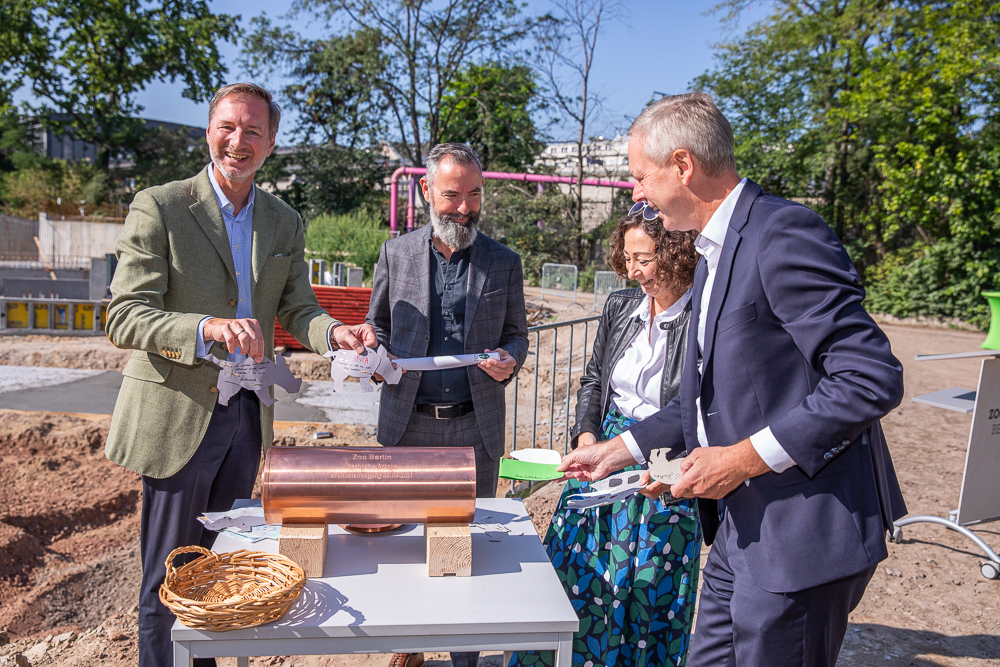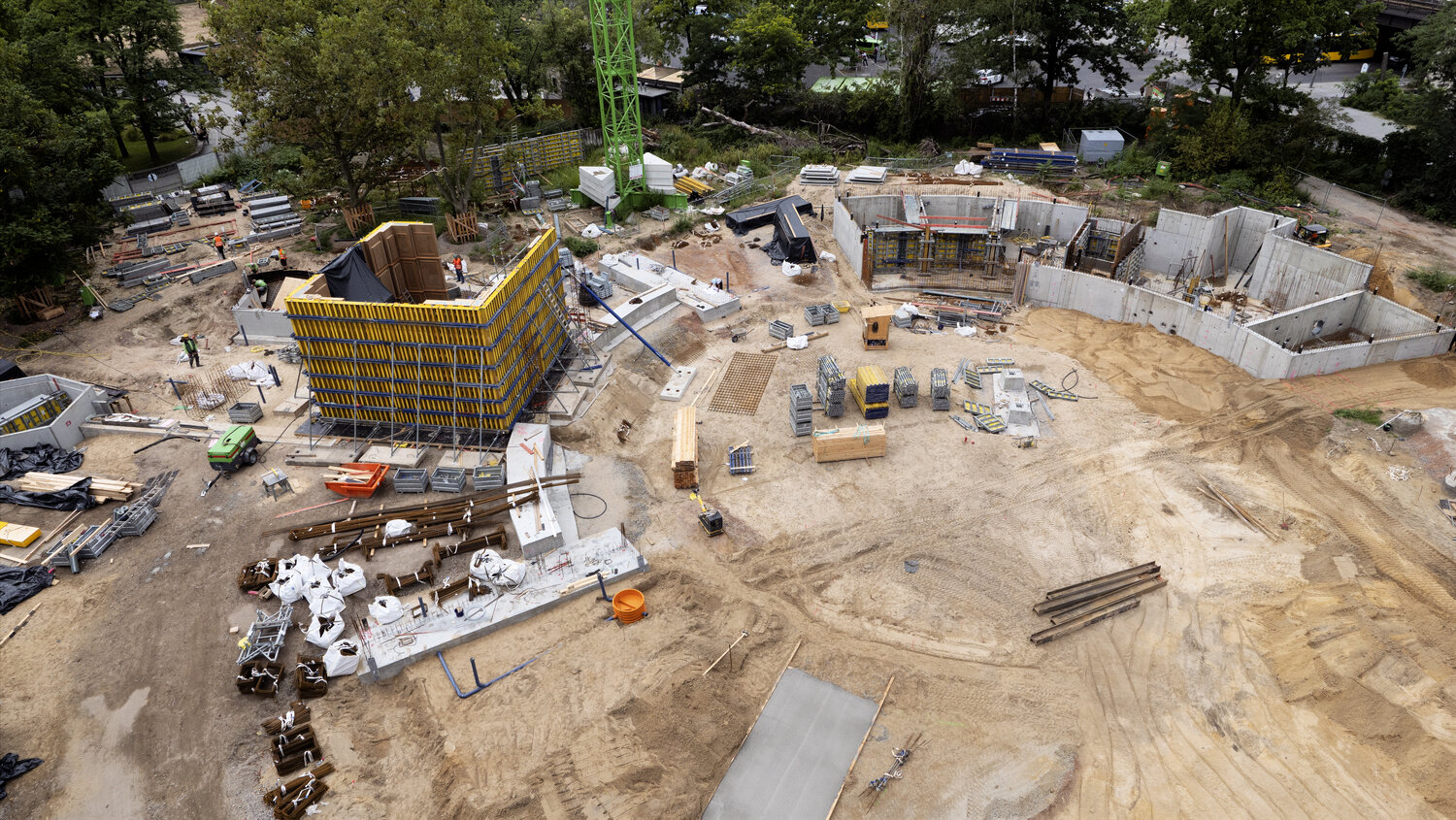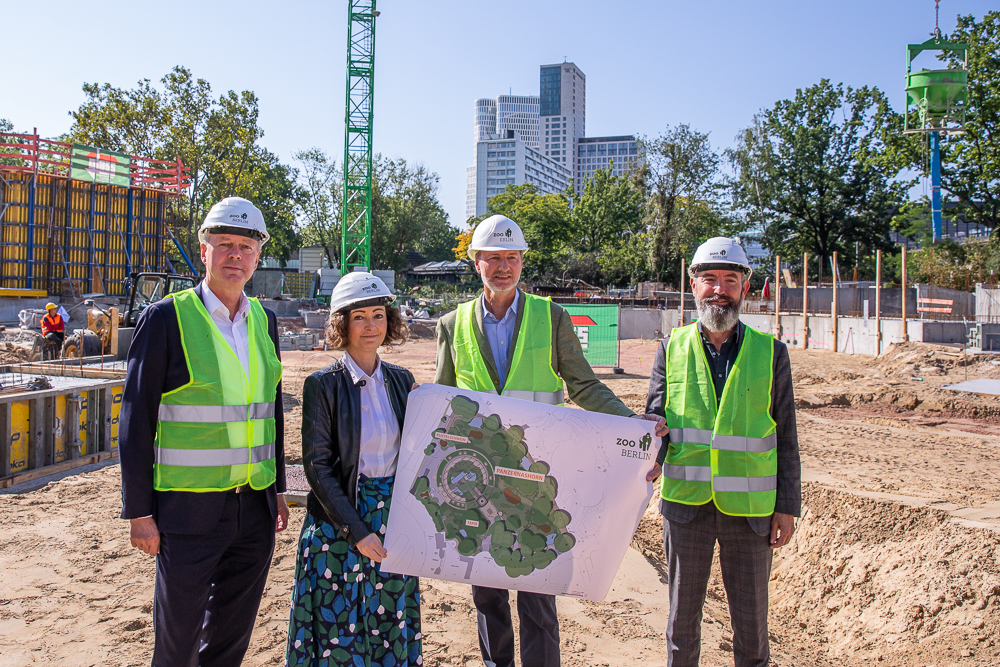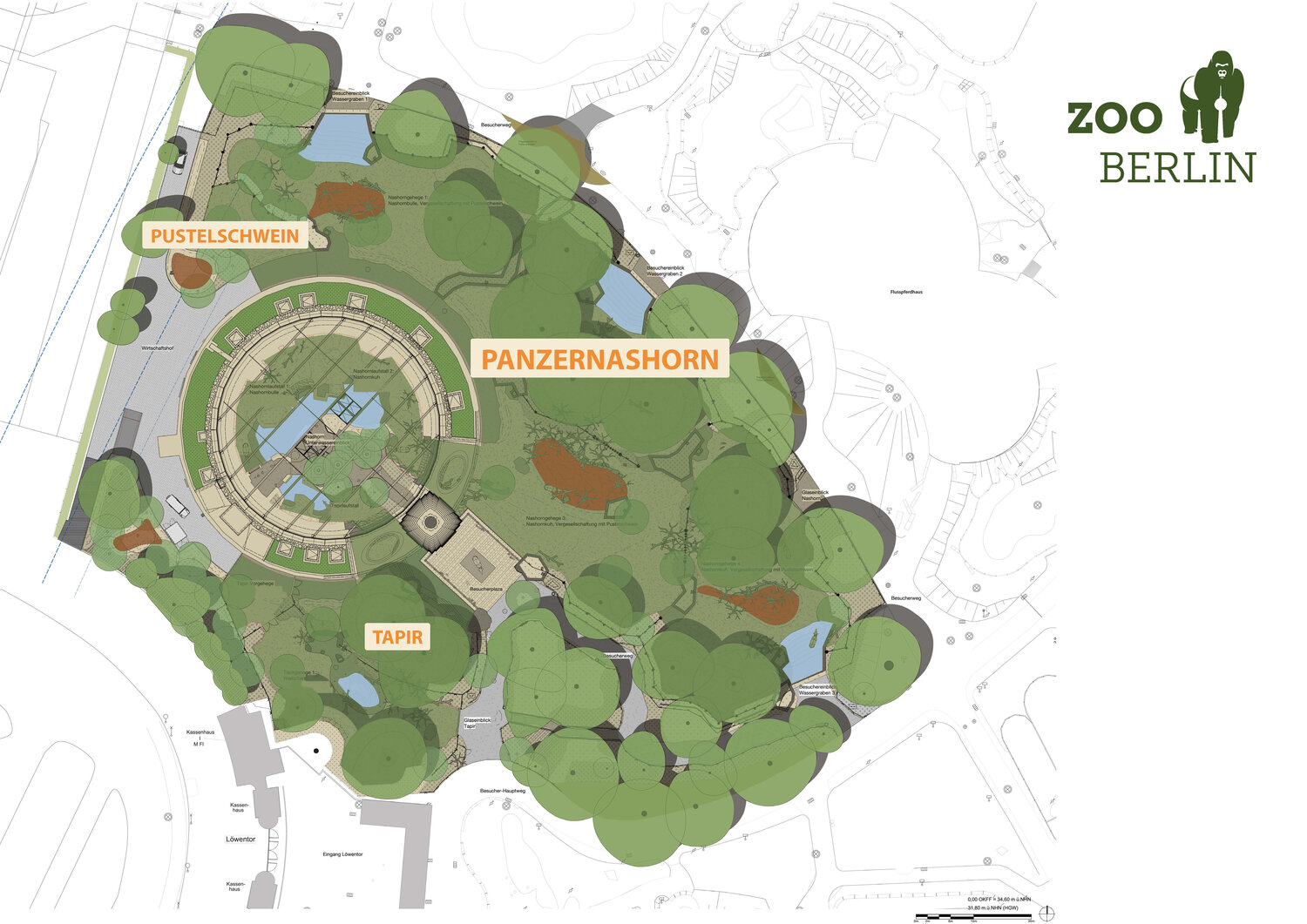A unique natural space is being created in the heart of the city. Indian rhinoceroses, tapirs and Visayan warty pigs are getting a new home in the shade of centuries-old trees on a site of around 14,000 m² at Zoo Berlin. Idyllic watercourses and tall grasses evoke the swampy habitat of the Asian animals. Once the demolition work had been completed and the foundations were in place, the Zoo was able to celebrate laying the cornerstone for the new rhino habitat in the presence of Berlin’s Economics Senator Ramona Pop. At the ceremony, a time capsule was placed in the building’s foundations by Senator Pop, Chairman of Zoo Berlin’s Supervisory Board Frank Bruckmann, Zoo and Tierpark Director Dr Andreas Knieriem, and architect Kieran Stanley of the dan pearlman group. The capsule contains an animal habitat sign, the building plans, the funding approval, and numerous well wishes for the endangered Indian rhinoceros in the form of colourful works of art and handicrafts created by rhino fans of all ages. “According to current estimates, there are only around 2,600 Indian rhinoceroses left in the wild. When this time capsule is opened some time in the future, we naturally hope that this number will be much higher,” says Dr Knieriem. “It is worth taking this sometimes arduous path for the sake of our animals and the protection of other members of their species in the wild.”
The architecture and outdoor space layout of the rhinoceros facility has been designed by the architecture firm dan pearlman Erlebnisarchitektur GmbH. Construction of the habitat, which recalls the animals’ natural home with its boggy areas for wallowing and multiple bathing pools, is expected to cost a total of around €20 million. Of that, some €13.7 million has been provided by the State of Berlin. “We regard a special construction project like this, at the heart of the City West area, as a sensible and sustainable investment – not only for the future of our long-standing zoo, but also for Berlin as a tourist destination,” says Senator Pop. “In future, this building will serve as a landmark, welcoming guests from near and far right at the Zoologischer Garten railway station and leading the way in both senses of the word. With a clear focus on conservation, the new rhino house shows the direction that zoos should be taking as modern centres of species protection.”
Funding for the new rhinoceros facility was secured before the coronavirus pandemic broke out, allowing the construction project to be implemented as planned in spite of the losses in revenue that Zoo Berlin has suffered over the past year and a half.
The centrepiece of the new habitat will be a 25-metre-high tower – a modern interpretation of the historic Elephant Pagoda. When completed, the facility will not only immerse visitors in the fascinating habitat of Indian rhinos, but will also make them aware of the need to protect these animals in the wild. “The rhinoceros habitat here in the heart of Berlin sets completely new standards,” explains Supervisory Board Chairman Bruckmann. “For the first time, visitors will even be able to observe these fascinating animals underwater.” The structure is expected to be completed in autumn 2022. Following a period of acclimatisation for the animals, Zoo guests should be able to explore the world of Indian rhinos, tapirs and warty pigs from spring 2023.



